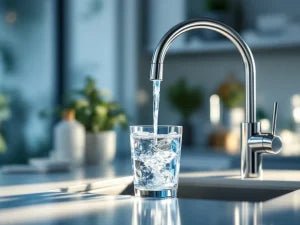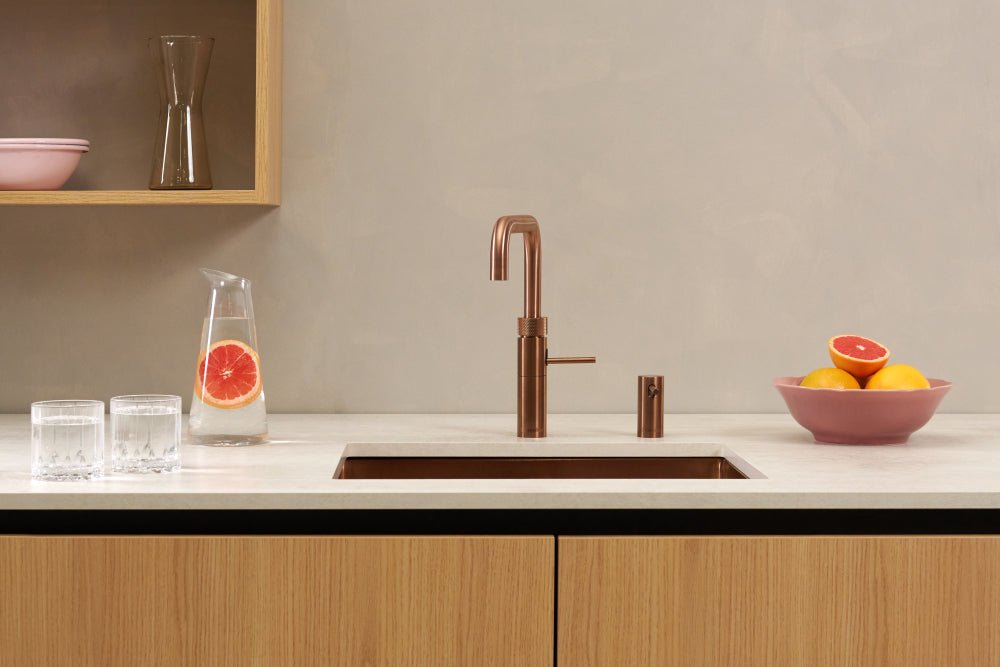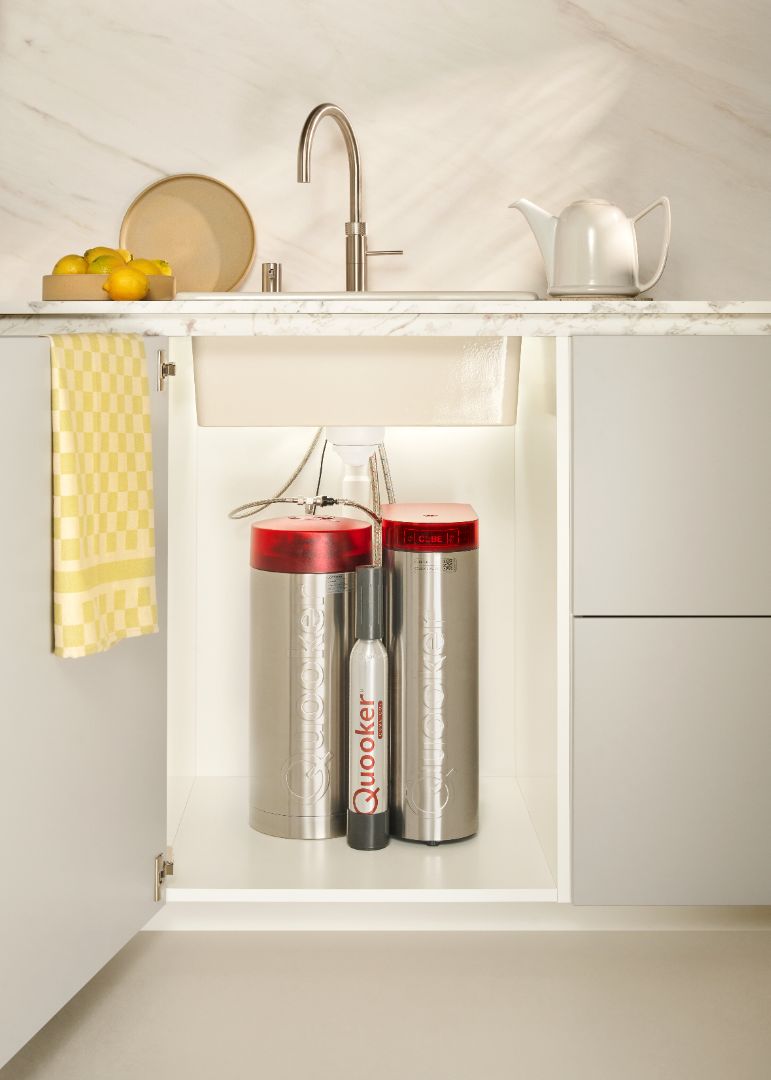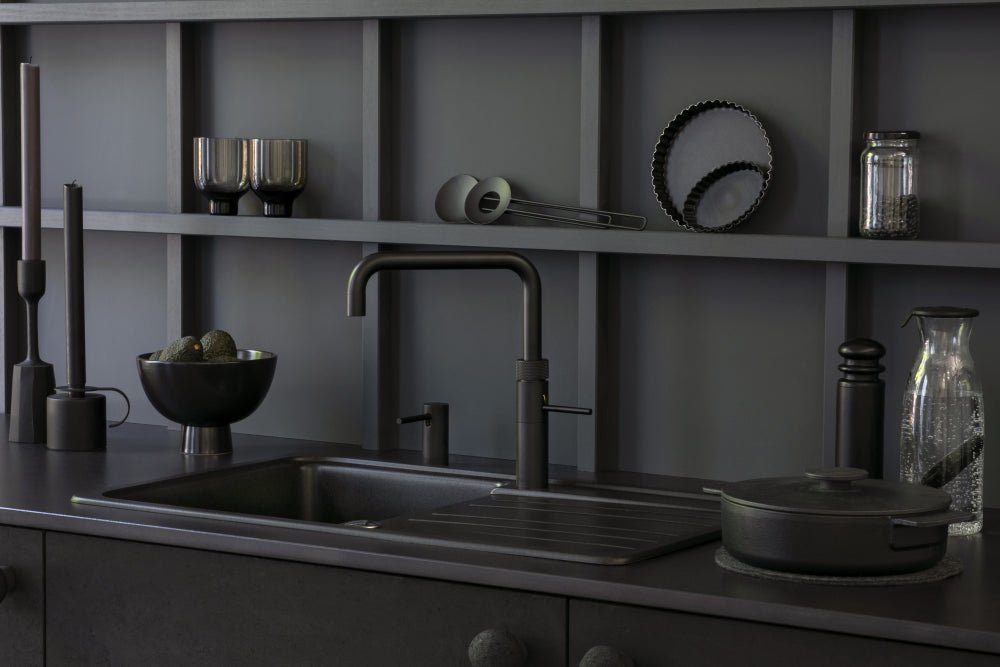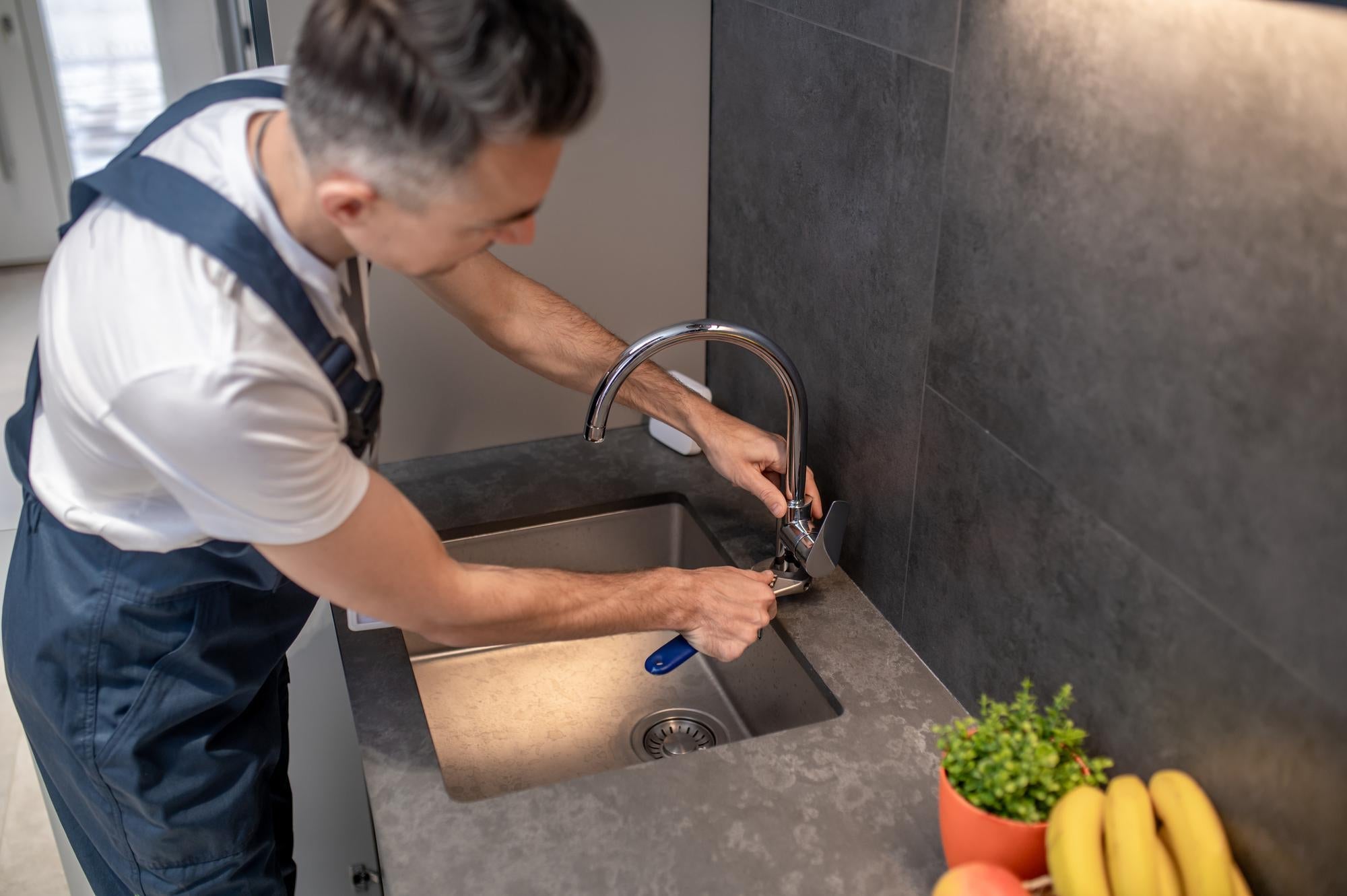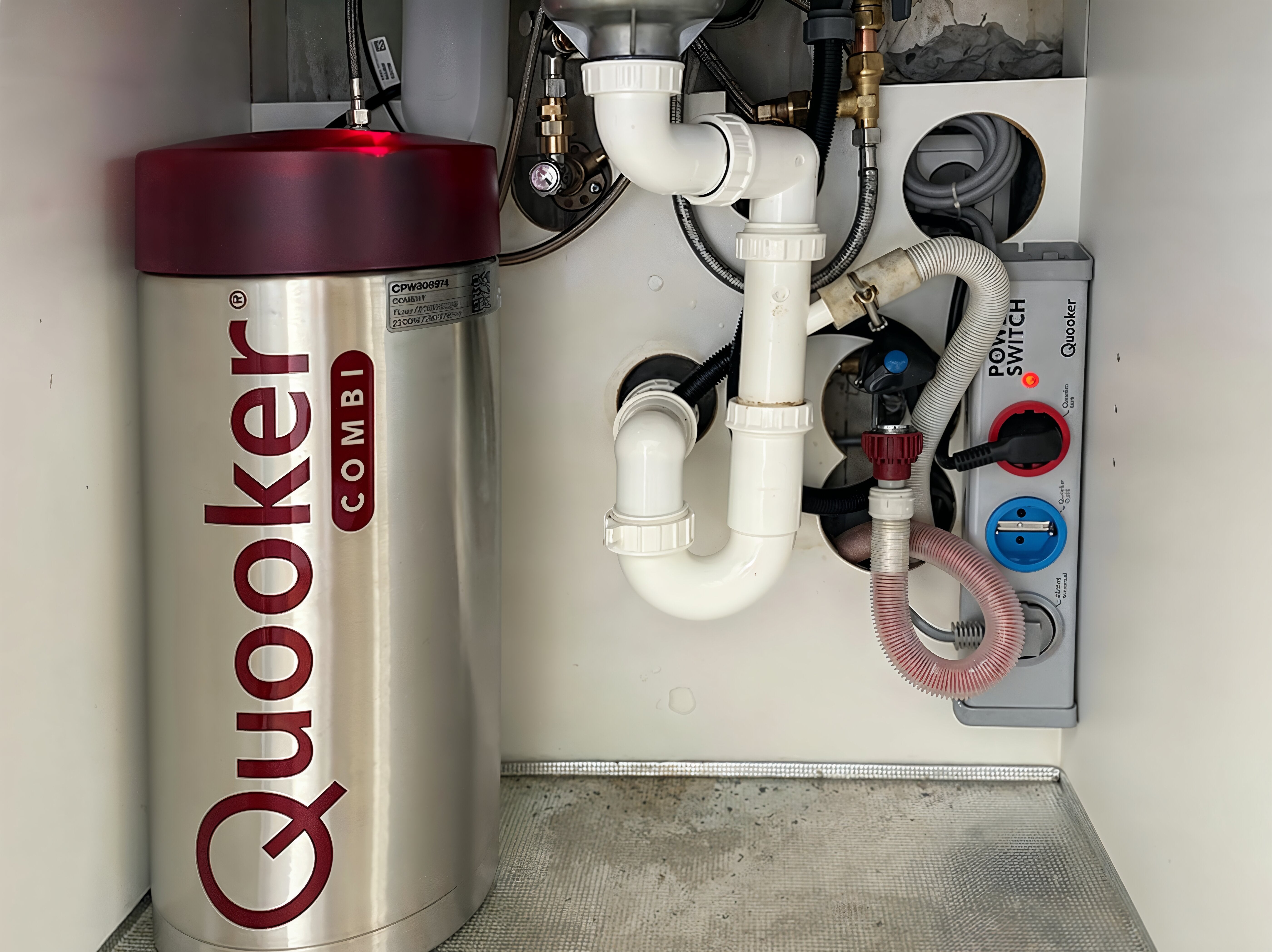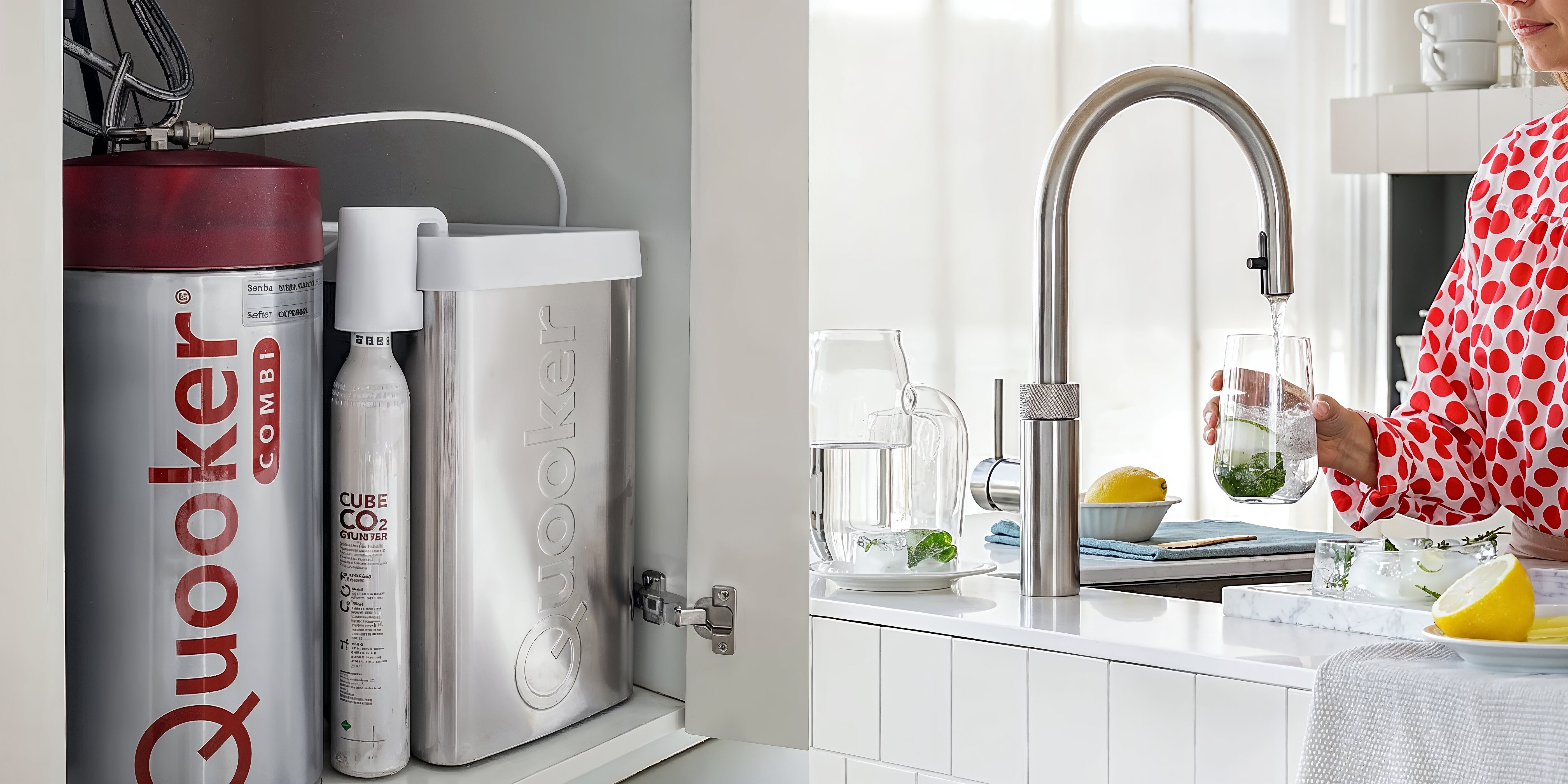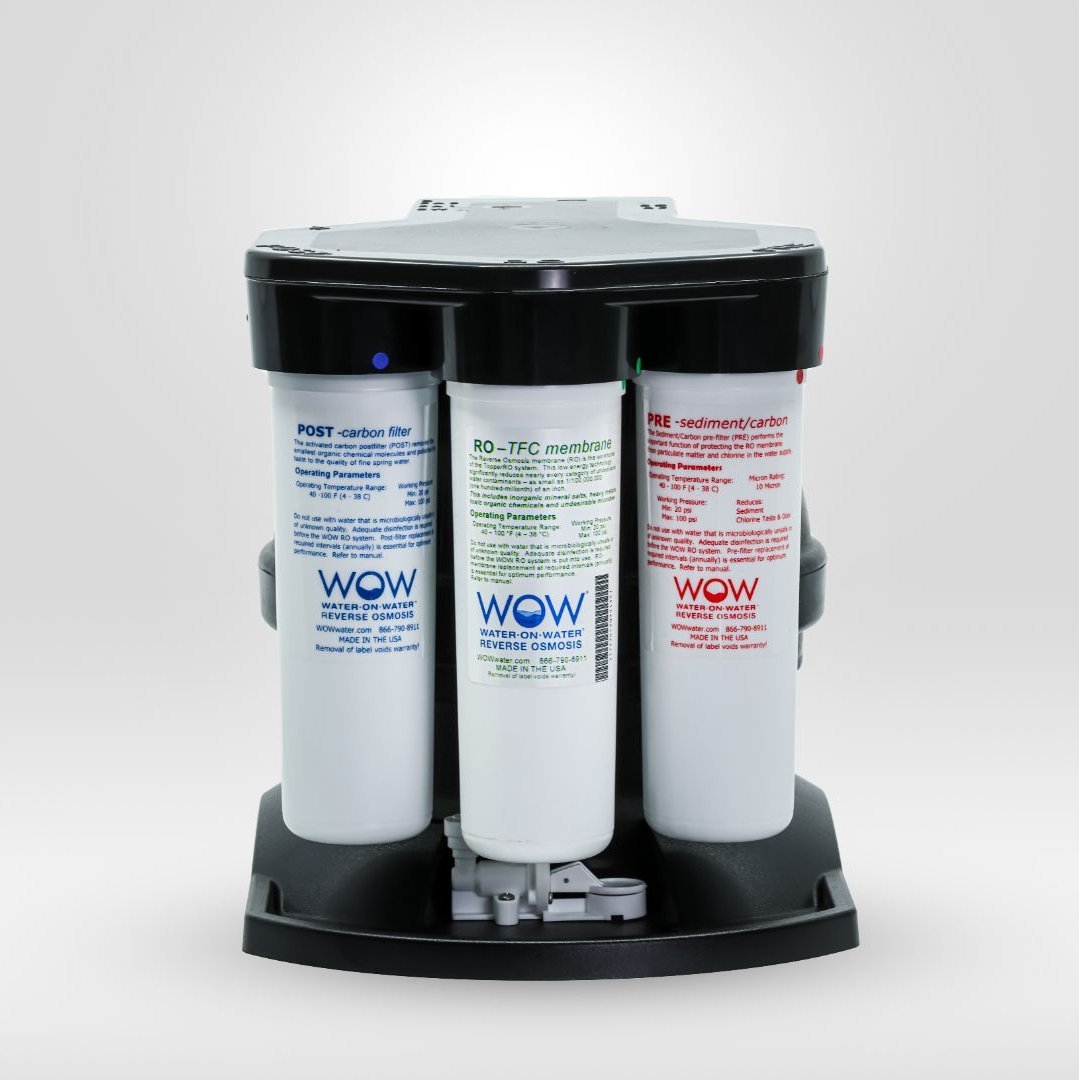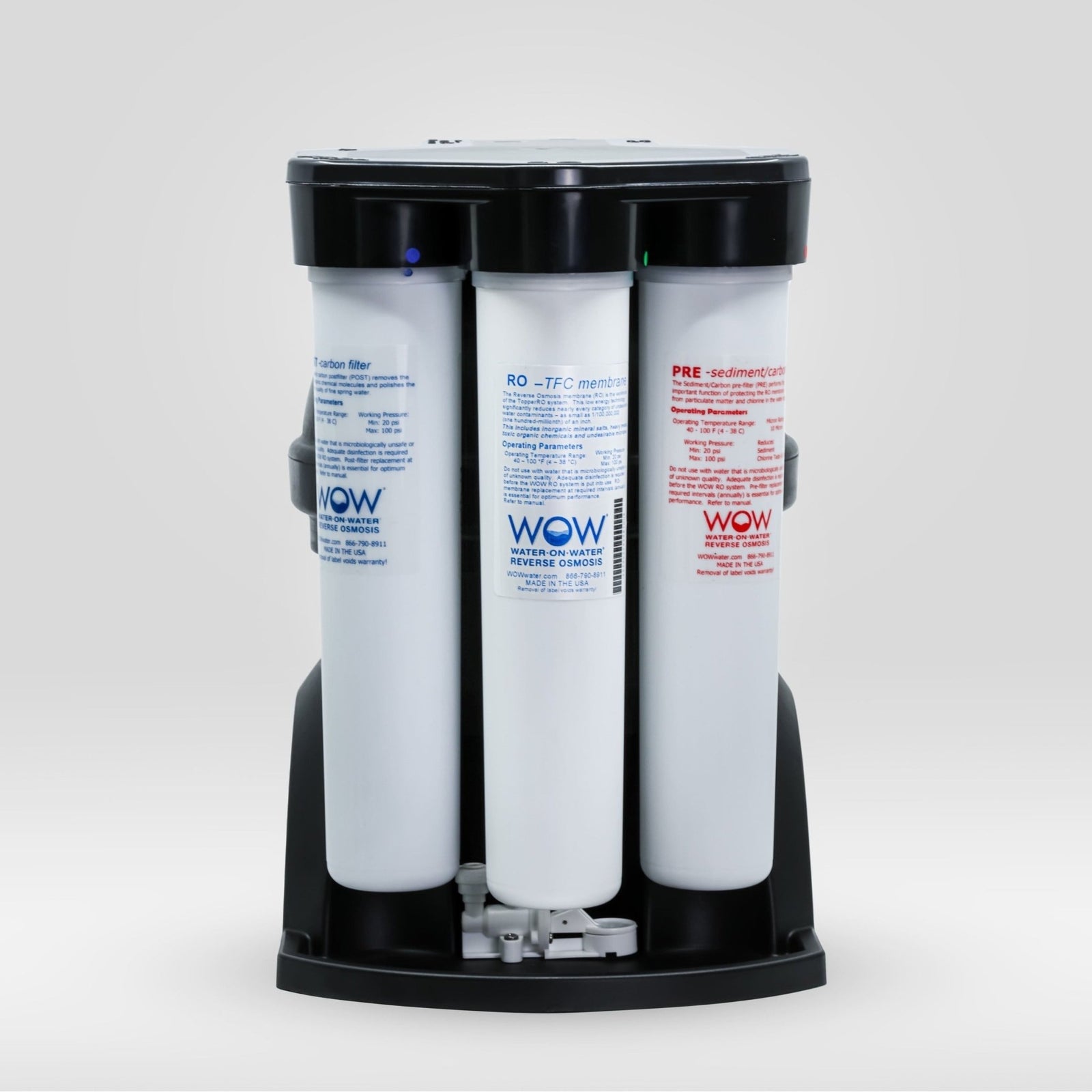There are several ways to improve the taste of tap water at home, from simple home remedies to advanced home water filtration systems . The most effective method is reverse osmosis technology, which removes up to 99% of unwanted substances, including chlorine, limescale, pharmaceutical residues, and PFAS. Other options include activated carbon filters, chlorine evaporation, or adding natural flavorings like lemon.
Why doesn't my tap water taste good?
The unpleasant taste of tap water has several causes that can vary by region. Chlorine is one of the most common culprits, added during the purification process to kill bacteria. This often gives water a chemical aftertaste that many people find unpleasant.
Minerals such as calcium and magnesium cause hardness in water, resulting in a metallic or bitter taste. In the Netherlands, most drinking water is extracted from groundwater, but its quality is increasingly under pressure due to contamination from pesticides and other substances that seep into the soil.
Old pipes in your home can also contribute to taste problems. Iron or copper pipes release metallic particles into the water, especially when water sits stagnant for extended periods. Furthermore, organic substances from the water source itself, such as algae or bacteria, can cause earthy or musty flavors.
What are the most effective home water filtration methods?
Reverse osmosis is known as the most thorough filtration technique for home use. This method forces pressurized water through a semi-permeable membrane that blocks molecules larger than water. The result is water free of virtually all impurities, including PFAS, pharmaceutical residues, pesticides, and heavy metals.
Activated carbon filters are popular because of their affordability and effectiveness against chlorine and organic compounds. These filters use activated carbon with a large surface area to absorb contaminants. They primarily improve the taste and odor of water, but are less effective against minerals and heavy metals.
Ceramic filters operate by mechanical filtration, forcing water through small pores. This method is effective against bacteria and sediment, but leaves dissolved substances such as minerals and chemicals largely untouched. For optimal results, different filtration techniques are often combined in a single system.
| Filtration method | Removes | Effectiveness |
|---|---|---|
| Reverse osmosis | PFAS, pharmaceutical residues, bacteria, viruses, heavy metals | Up to 99% |
| Activated carbon | Chlorine, organic substances, odors | 70-90% |
| Ceramic filters | Bacteria, sediment, suspended particles | 95-99% for bacteria |
How does reverse osmosis work for taste improvement?
Reverse osmosis works by forcing pressurized water through a special membrane with pores so small that only water molecules can pass through. This process effectively removes substances that negatively affect taste, including chlorine, limescale, and even microscopic contaminants like viruses and pharmaceutical residues.
The filtered water is stored in a durable storage tank specifically designed to maintain its purity. Modern systems operate entirely without electricity and produce up to 500% less wastewater than traditional methods, making them both effective and environmentally friendly.
After the filtration process, advanced systems add essential minerals like calcium and magnesium through a remineralization filter. This creates a natural, smooth taste and a slightly alkaline pH that's not only delicious but also healthy for the body. The result is water that tastes fresher than bottled water, without the plastic or chemical aftertaste of untreated tap water.
Can I improve my water taste without a filter system?
There are several simple ways to improve the taste of tap water without a full filtration system. Leaving water in an open pitcher for 24 hours allows chlorine to evaporate, reducing the chemical taste. This method works best at room temperature in a wide pitcher for maximum air exposure.
Chilling in the refrigerator effectively masks unpleasant flavors because cold temperatures desensitize taste buds. Many people find chilled water fresher and more pleasant, even without any change in its chemical composition.
Natural flavorings offer a popular solution:
- Lemon slices neutralize chemical flavors with citric acid
- Cucumber gives a fresh, mild taste
- Fresh mint has a cooling effect
- Ginger adds a spicy kick that masks other flavors
Water carafes with built-in filters offer an intermediate solution. These typically use activated carbon to remove chlorine and some organic compounds, but are less effective than complete systems for removing heavy metals or bacteria.
How do I test the quality of my tap water?
A TDS meter (Total Dissolved Solids) measures the amount of dissolved solids in water and provides a value in parts per million (ppm). For tap water, values between 50 and 300 ppm are normal, with lower values generally being better for the taste. Values above 500 ppm indicate high mineral concentrations that can negatively impact the taste.
Test strips offer a quick way to check specific parameters such as pH, hardness, chlorine levels, and nitrates. These strips change color upon contact with water, comparing the color to a reference chart. For more accurate results, digital test meters are available that can measure multiple parameters.
Professional water testing by a laboratory provides the most complete picture, including the presence of bacteria, heavy metals, and chemical contaminants. This is especially recommended for:
- Persistent taste or odor problems
- Discoloration of the water
- Health complaints that may be water-related
- Old pipes in the house
What benefits does filtered water offer besides better taste?
Filtered water noticeably transforms the flavor of hot beverages. Tea becomes fuller-flavored without the bitter undertone often caused by hard water. Coffee develops a richer, purer taste because its natural aromas are better developed without the interference of chlorine or minerals.
Flowers demonstrably stay fresh longer in filtered water, as bacteria and chlorine that accelerate wilting are removed. Pets often drink more when they have access to filtered water, which contributes to their health and hydration.
The health benefits are significant when harmful substances like PFAS, pharmaceutical residues, and pesticides are removed. These substances can accumulate in the body and cause long-term health problems. Filtered water drastically reduces this exposure.
Household appliances also benefit from filtered water:
- Coffee makers and kettles remain free from limescale deposits
- Steam irons last longer without clogging
- Humidifiers work more efficiently without mineral deposits
The environmental benefits shouldn't be underestimated. A family switching from bottled water to a home filtration system saves hundreds of plastic bottles annually. Modern filtration systems with recyclable filters and minimal water consumption make this choice even more sustainable.
Improving the taste of tap water at home is more than just a matter of convenience; it contributes to health, sustainability, and quality of life. Whether you choose simple solutions like natural flavorings or invest in advanced filtration technology like reverse osmosis, every step toward purer water is valuable. With the right knowledge and tools, you can enjoy fresh, flavorful water every day that not only tastes good but also contributes to a healthier lifestyle and a cleaner planet.
